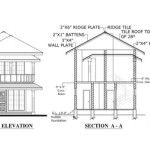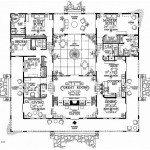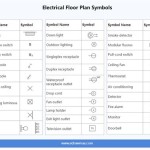Insulated Cat House Plans: Providing Warmth and Shelter for Felines
Providing adequate shelter for outdoor cats, especially during harsh weather conditions, is an important consideration for animal welfare. Insulated cat houses offer a solution for maintaining a comfortable temperature and protecting cats from the elements. A well-insulated cat house can significantly improve a cat's chances of survival and well-being during cold winters and hot summers. This article will explore various insulated cat house plans, detailing construction techniques, materials, and considerations for ensuring a safe and effective shelter for felines.
Key Considerations Before Construction
Before embarking on the construction of an insulated cat house, several key factors require careful consideration. These factors impact the overall effectiveness and suitability of the house for its intended purpose.
Climate: The local climate is a primary determinant of the level of insulation required. Regions with particularly harsh winters necessitate thicker insulation and potentially supplemental heating elements. Warmer climates may benefit from insulation primarily designed to provide cooling and shade during the hottest months. Understanding the typical temperature extremes of the area will guide the selection of appropriate insulation materials and construction techniques.
Number of Cats: The size of the cat house should be proportionate to the number of cats it is intended to shelter. Overcrowding can lead to stress and disease transmission. Conversely, an excessively large space can be less effective at retaining heat, particularly in colder climates. A general guideline is to provide at least 20 inches by 20 inches of floor space per cat. Multiple cats may benefit from multiple chambers within the house to allow for individual space and reduced competition.
Placement: The location of the cat house is crucial for its effectiveness. Ideally, the house should be placed in a sheltered location, away from prevailing winds and direct sunlight during the hottest part of the day. Positioning the entrance away from the primary wind direction can also help to minimize drafts. Raising the house slightly off the ground on bricks or a pallet can prevent moisture accumulation and improve ventilation. Consider areas that cats already frequent or areas with natural shelter, such as under bushes or near fences.
Safety: All materials used in the construction of the cat house must be non-toxic and safe for cats. Avoid using treated lumber, which can contain harmful chemicals. Ensure that there are no sharp edges or protruding nails that could injure the cats. The entrance should be large enough for cats to easily enter and exit but small enough to prevent larger animals, such as dogs or raccoons, from entering. Providing an escape route, such as a second, smaller exit, can also be beneficial.
Common Insulated Cat House Plans and Materials
Various designs and materials can be employed to create an effective insulated cat house. The choice of plan and materials will depend on factors such as cost, availability, ease of construction, and desired level of insulation.
Simple Wooden Box Design: This is a basic and relatively easy-to-construct design. It involves building a simple wooden box with a roof and an entrance hole. Insulation is then added to the walls, floor, and roof. Plywood or OSB (oriented strand board) are commonly used for the box construction. Insulation options include rigid foam insulation, fiberglass batting, or recycled denim insulation. The interior can be lined with a soft material such as fleece or straw for added comfort. The roof should be slightly sloped to allow for water runoff, and it is advisable to apply a waterproof sealant to protect the wood from the elements. A variation on this design includes a removable roof to facilitate cleaning and maintenance.
Igloo-Style Cat House: This design mimics the shape of an igloo and is known for its efficient heat retention. It can be constructed using materials such as rigid foam insulation sheets. The sheets are cut into triangular or trapezoidal shapes and joined together to form a dome-like structure. The interior can be lined with a soft material, and the exterior can be painted or covered with a waterproof coating. The entrance is typically a small, circular opening that allows cats to easily enter and exit while minimizing heat loss. This design can be more challenging to construct than a simple box design but offers superior insulation and weather protection.
Double-Walled Cat House: This design features a double layer of wood or other building material with insulation sandwiched between the layers. This approach provides excellent insulation and structural integrity. The inner and outer walls can be constructed from plywood, OSB, or even repurposed wood pallets. The insulation can be rigid foam, fiberglass, or other suitable materials. This design tends to be heavier and more durable than a single-walled structure. Proper ventilation is essential in double-walled designs to prevent moisture buildup and mold growth.
Repurposed Materials: Existing materials, such as plastic storage bins, old coolers, or dog houses, can be repurposed into insulated cat houses. These materials often provide a head start in terms of structure and weather resistance. Insulation can be added to the interior of the repurposed container, and an entrance hole can be cut to the appropriate size. Utilizing repurposed materials can be a cost-effective and environmentally friendly approach to providing shelter for cats. However, careful attention must be paid to safety, ensuring that the repurposed material is non-toxic and free of sharp edges or hazards.
Insulation Materials and Techniques
The effectiveness of an insulated cat house hinges on the type and application of the insulation material. Selecting the appropriate material and employing proper installation techniques are crucial for maximizing thermal performance.
Rigid Foam Insulation: Rigid foam insulation, such as polystyrene (Styrofoam) or polyurethane, is a popular choice for cat houses due to its high R-value (a measure of thermal resistance), ease of cutting and installation, and water resistance. It can be cut to size and glued or secured with fasteners to the interior walls of the house. Care should be taken to seal all seams and gaps to prevent air infiltration. Rigid foam insulation is available in various thicknesses, allowing for customization based on the climate and desired level of insulation. It is important to cover the rigid foam with a layer of wood or fabric to protect it from being scratched or chewed by the cats. Some types of rigid foam may release harmful gases when burned, so it is essential to choose a fire-retardant option.
Fiberglass Batting: Fiberglass batting is another common insulation material that is readily available and relatively inexpensive. It is typically installed between the framing members of the cat house walls and roof. While fiberglass provides good thermal insulation, it can be irritating to the skin and respiratory system. It is important to wear protective gear, such as gloves and a mask, during installation. Fiberglass batting should be completely enclosed within the walls and roof of the cat house to prevent cats from coming into direct contact with it. Moisture can significantly reduce the effectiveness of fiberglass insulation, so it is essential to ensure that the cat house is waterproof and well-ventilated.
Recycled Denim Insulation: Recycled denim insulation is an environmentally friendly alternative to fiberglass or rigid foam. It is made from recycled denim scraps and offers good thermal and acoustic insulation properties. It is also non-irritating and safe for use around animals. Recycled denim insulation can be installed in the same manner as fiberglass batting, filling the cavities between the framing members of the cat house walls and roof. It is important to ensure that the denim insulation is dry before installation and that the cat house is protected from moisture.
Straw or Hay: Straw or hay can be used as a natural insulation material, particularly in simple cat house designs. It provides a layer of thermal protection and can also serve as bedding for the cats. Straw or hay should be packed tightly to maximize its insulating properties. It is important to replace the straw or hay regularly to prevent mold growth and maintain cleanliness. While straw and hay offer a natural and readily available insulation option, they may not provide the same level of thermal performance as more conventional insulation materials.
Essential Features for Enhanced Comfort and Safety
Beyond basic insulation, several additional features can enhance the comfort and safety of an insulated cat house.
Elevated Floor: Raising the floor of the cat house off the ground helps to prevent moisture accumulation and improves ventilation. This can be achieved by placing the house on bricks, pallets, or a simple wooden frame. An elevated floor also provides a barrier against ground frost, which can significantly reduce the temperature inside the house.
Wind Protection: Shielding the entrance of the cat house from prevailing winds is crucial for minimizing drafts and preventing heat loss. This can be accomplished by positioning the entrance away from the wind direction or by adding a small awning or overhang above the entrance. A simple flap made of heavy fabric or plastic can also be installed over the entrance to further reduce drafts. Consider a tunnel entrance, meaning the cat has to turn a corner to get into the main area.
Multiple Exits: Providing more than one exit from the cat house can be beneficial, especially in areas with predators. A second, smaller exit allows cats to escape if they feel threatened or trapped inside the house. The second exit should be strategically placed on the opposite side of the house from the main entrance.
Heating Elements (Optional): In extremely cold climates, supplemental heating elements can be added to the cat house to provide additional warmth. Safe and low-wattage heating pads, self-warming mats, or pet-safe heating lamps can be used. It is important to ensure that any heating element is designed for outdoor use and is protected from moisture and damage. Regularly monitor the temperature inside the cat house to prevent overheating.
Regular Maintenance: Regular maintenance is essential for ensuring the longevity and effectiveness of the insulated cat house. Periodically inspect the house for signs of damage, such as cracks, leaks, or pest infestations. Clean the interior of the house regularly to remove debris, dirt, and parasites. Replace the bedding as needed to maintain a clean and comfortable environment for the cats. Apply a fresh coat of sealant to the exterior of the house every few years to protect the wood from the elements.

15 Diy Outdoor Cat House Plans For Feline Shelter

Cat House Plans Insulated Feral Diy

Outdoor Cat House Plans Unfinished Insulated With Heater Insulatedcathouse Feral

Cat House Roof Plans Myoutdoorplans

Diy Cat House Simply Designing With Ashley

Outdoor Cat House Plans Myoutdoorplans

Outdoor Cat House Plans Howtospecialist How To Build Step By Diy

Diy Insulated Cat House Inexpensive

25 Free Diy Outdoor Cat House Plans Shelter Blitsy

Image Result For Diy Outdoor Cat Shelter House Plans








